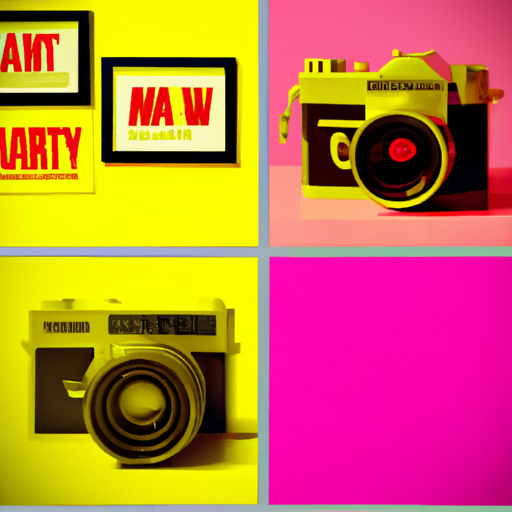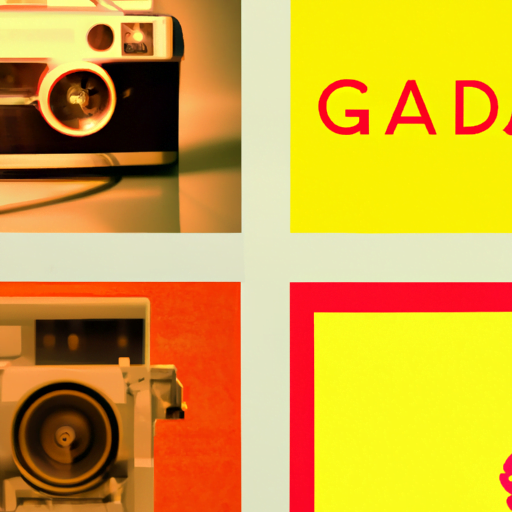
-
Table of Contents
Vintage Design Revival: Nostalgia in Modern Graphics

In recent years, there has been a noticeable resurgence of vintage design elements in modern graphics. From retro typography to old-school color palettes, designers are embracing nostalgia and incorporating it into their work. This revival of vintage design is not just a passing trend; it is a powerful tool that evokes emotions, creates a sense of authenticity, and captures the attention of audiences. In this article, we will explore the reasons behind the popularity of vintage design in modern graphics and examine its impact on the design industry.
The Power of Nostalgia
Nostalgia is a powerful emotion that can transport us back in time and evoke fond memories. It is a sentiment that resonates with people of all ages, as it taps into our collective cultural heritage. Vintage design elements, such as retro typography, distressed textures, and faded colors, can instantly trigger feelings of nostalgia and create a sense of familiarity and comfort.
Research has shown that nostalgia can have a positive impact on our mood and well-being. According to a study published in the Journal of Consumer Research, nostalgia can increase feelings of social connectedness and alleviate feelings of loneliness and boredom. By incorporating vintage design elements into their work, designers can tap into these positive emotions and create a deeper connection with their audience.
The Authenticity Factor
In a world saturated with digital content, there is a growing desire for authenticity and a longing for the past. Vintage design elements can help create a sense of authenticity by evoking a bygone era. Whether it’s a retro-inspired logo or a vintage-style poster, these design elements can give a brand or product a unique and timeless appeal.
One example of a brand that successfully incorporates vintage design into its branding is Coca-Cola. The iconic red and white logo, along with its vintage-inspired advertisements, has become synonymous with the brand’s heritage and authenticity. By embracing its vintage roots, Coca-Cola has managed to stay relevant and capture the hearts of consumers around the world.
The Attention-Grabbing Effect
In a world filled with visual noise, it can be challenging for brands and designers to capture the attention of their target audience. Vintage design elements, with their unique and nostalgic appeal, can help cut through the clutter and grab the viewer’s attention.
One study conducted by the University of Southampton found that people are more likely to pay attention to and remember visual stimuli that are associated with positive emotions. Vintage design elements, with their nostalgic and comforting qualities, can evoke positive emotions and make a lasting impression on the viewer.
Case Studies: Successful Vintage Design Revivals
Several brands and designers have successfully incorporated vintage design elements into their work, creating a strong connection with their audience and achieving commercial success. Let’s take a look at some notable case studies:
1. Jack Daniel’s
Jack Daniel’s, the iconic American whiskey brand, has a long history dating back to the 19th century. The brand’s vintage-inspired label design, featuring ornate typography and a weathered texture, has become instantly recognizable and synonymous with the brand’s authenticity and heritage.
2. Instagram
When Instagram introduced its new logo in 2016, it received mixed reactions from users. Many criticized the modern and minimalist design, missing the vintage-inspired camera icon that had become synonymous with the app. In response to the backlash, Instagram introduced a new feature that allowed users to switch to a retro-inspired version of the logo, tapping into the nostalgia and emotional connection users had with the old design.
3. Levi’s
Levi’s, the iconic denim brand, has successfully incorporated vintage design elements into its branding and marketing campaigns. From retro-inspired advertisements to limited-edition collections featuring vintage logos and graphics, Levi’s has managed to tap into the nostalgia for classic Americana and create a strong emotional connection with its audience.
The Future of Vintage Design
The revival of vintage design in modern graphics shows no signs of slowing down. As technology continues to advance and the digital landscape evolves, the longing for authenticity and nostalgia will only grow stronger. Designers will continue to incorporate vintage design elements into their work, creating a sense of familiarity and emotional connection with their audience.
However, it is important for designers to strike a balance between nostalgia and innovation. While vintage design elements can be powerful tools, they should be used thoughtfully and in a way that feels authentic to the brand or product. Designers should also be mindful of the cultural and historical context of the vintage elements they incorporate, ensuring that they are respectful and appropriate.
Summary
The revival of vintage design in modern graphics is a testament to the power of nostalgia and the longing for authenticity in today’s digital world. Vintage design elements evoke emotions, create a sense of authenticity, and capture the attention of audiences. Brands like Coca-Cola, Jack Daniel’s, Instagram, and Levi’s have successfully incorporated vintage design into their branding, creating a strong connection with their audience. As technology advances, the demand for vintage design will continue to grow, but designers must use these elements thoughtfully and in a way that feels authentic to the brand.
